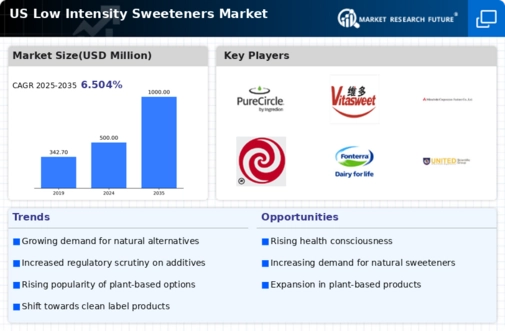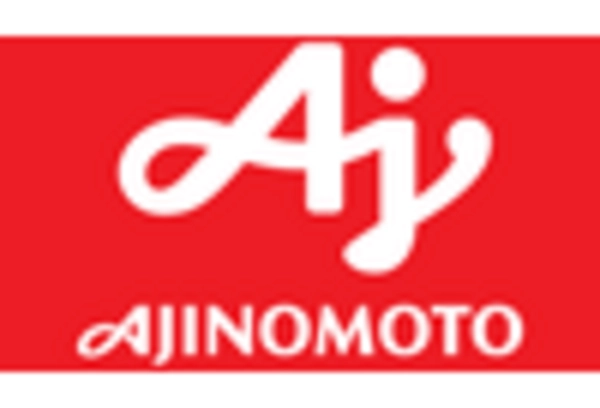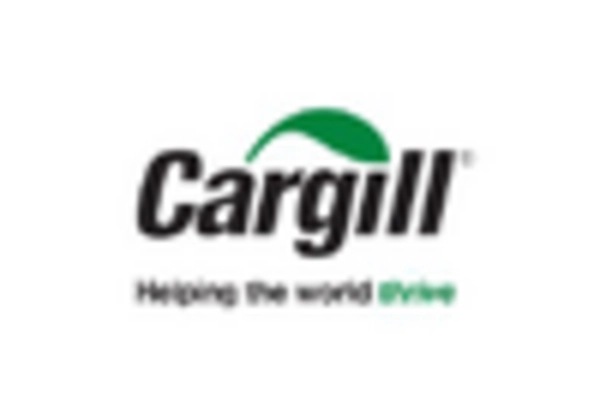Focus on Weight Management Solutions
The low intensity-sweeteners market is influenced by the increasing focus on weight management solutions among consumers. As obesity rates continue to rise, individuals are actively seeking alternatives to traditional sugars that can help them manage their weight without sacrificing taste. This has led to a growing acceptance of low intensity-sweeteners as viable options for those looking to reduce caloric intake. Market analysis indicates that products marketed for weight management have seen a growth rate of approximately 20% in the last year, underscoring the potential of low intensity-sweeteners in this segment. As health and wellness trends persist, the low intensity-sweeteners market is likely to benefit from this heightened awareness and demand.
Growing Demand for Natural Sweeteners
The low intensity-sweeteners market is experiencing a notable shift towards natural sweeteners, driven by consumer preferences for healthier alternatives. As individuals become increasingly aware of the adverse effects of artificial sweeteners, the demand for naturally derived options is rising. This trend is reflected in market data, indicating that the share of natural sweeteners in the overall low intensity-sweeteners market has increased by approximately 15% over the past three years. Consumers are gravitating towards products that are perceived as more wholesome, prompting manufacturers to innovate and reformulate their offerings. This growing inclination towards natural ingredients is likely to shape the future landscape of the low intensity-sweeteners market, as brands strive to meet the evolving expectations of health-conscious consumers.
Rising Popularity of Functional Foods
The low intensity-sweeteners market is propelled by the rising popularity of functional foods, designed to provide health benefits beyond basic nutrition. Consumers are increasingly interested in products that not only satisfy their sweet cravings but also offer additional health advantages, such as improved digestion or enhanced energy levels. This trend is evident in the growing number of functional food products that incorporate low intensity-sweeteners, as manufacturers seek to differentiate their offerings in a competitive market. Recent statistics indicate that the functional food sector is projected to grow by 10% annually, suggesting a promising future for low intensity-sweeteners as they become integral to these innovative products. The intersection of health benefits and sweetening solutions is likely to drive further growth in the low intensity-sweeteners market.
Increased Application in Food and Beverage Industry
The low intensity-sweeteners market is witnessing a surge in applications across the food and beverage industry. With the rising trend of low-calorie and sugar-free products, manufacturers are increasingly incorporating low intensity-sweeteners into a variety of items, including beverages, baked goods, and dairy products. Recent data suggests that the beverage segment alone accounts for nearly 40% of the total market share, highlighting the significant role of low intensity-sweeteners in this sector. As consumers seek to reduce sugar intake while still enjoying sweet flavors, the versatility of these sweeteners is becoming a key driver for growth. This trend is expected to continue, as the food and beverage industry adapts to changing consumer preferences and regulatory pressures.
Evolving Consumer Preferences Towards Clean Label Products
The low intensity-sweeteners market is shaped by evolving consumer preferences towards clean label products. As transparency in food labeling becomes a priority for consumers, there is a growing demand for sweeteners that are perceived as simple and natural. This trend is prompting manufacturers to reformulate their products to include low intensity-sweeteners that align with clean label principles. Market data indicates that approximately 30% of consumers are willing to pay a premium for products that feature clean labels, which is influencing purchasing decisions across various food categories. As the clean label movement continues to gain momentum, the low intensity-sweeteners market is likely to see a corresponding increase in demand for sweeteners that meet these criteria.

















Leave a Comment